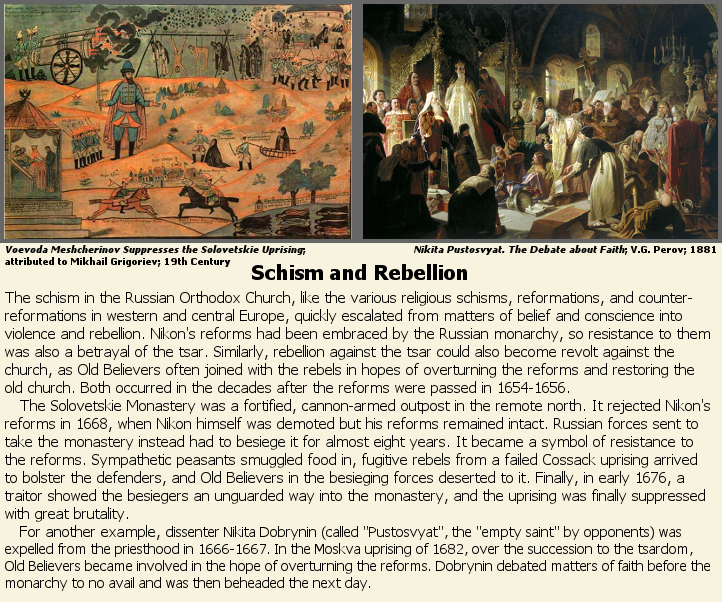

Schism and Rebellion
The schism in the Russian Orthodox Church, like the various religious schisms, reformations, and counter-reformations in western and central Europe, quickly escalated from matters of belief and conscience into violence and rebellion. Nikon's reforms had been embraced by the Russian monarchy, so resistance to them was also a betrayal of the tsar. Similarly, rebellion against the tsar could also become revolt against the church, as Old Believers often joined with the rebels in hopes of overturning the reforms and restoring the old church. Both occurred in the decades after the reforms were passed in 1654-1656.
The Solovetskie Monastery was a fortified, cannon-armed outpost in the remote north. It rejected Nikon's reforms in 1668, when Nikon himself was demoted but his reforms remained intact. Russian forces sent to take the monastery instead had to besiege it for almost eight years. It became a symbol of resistance to the reforms. Sympathetic peasants smuggled food in, fugitive rebels from a failed Cossack uprising arrived to bolster the defenders, and Old Believers in the besieging forces deserted to it. Finally, in early 1676, a traitor showed the besiegers an unguarded way into the monastery, and the uprising was finally suppressed with great brutality.
For another example, dissenter Nikita Dobrynin (called "Pustosvyat", the "empty saint" by opponents) was expelled from the priesthood in 1666-1667. In the Moskva uprising of 1682, over the succession to the tsardom, Old Believers became involved in the hope of overturning the reforms. Dobrynin debated matters of faith before the monarchy to no avail and was then beheaded the next day.